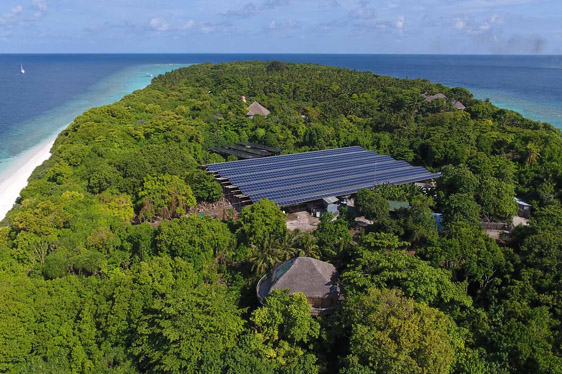Feb 18, 2021
As a solar professional, it's important to be able to explain the process of how a solar photovoltaic system produces electricity. This process seems mysterious to many and misconceptions abound among those unfamiliar with solar energy. In this article, we get back to basics with an overview of how solar installations provide electricity and how the process works for the customer.
A simple photovoltaic system contains two basic types of components:
Solar Modules: Solar modules contain solar cells that convert sunlight into electricity.
Inverter(s): An inverter converts DC current to AC current. It can also perform other functions that are beneficial to the electricity grid.
It is common practice to refer to all components of a PV system besides the modules as the balance of system (BOS) components. Examples of BOS components include inverters, disconnects, racking, and wiring.

Solar panels convert the energy of photons (light particles) into electricity. This process is called the photovoltaic effect. When a photon hits a photovoltaic (PV) device, its energy is transferred from the photon to the local electrons in the material. These excited electrons begin to flow, producing an electric current.
Solar cells (within solar panels) produce direct current (DC) electricity, which is typically converted to alternating current (AC) electricity by an inverter. This allows it to be sent back to the electric grid, which operates with AC electricity, as well as used to power appliances in the customer’s home (or commercial building, in the case of commercial solar installations). In summary, the process of how solar panels works involves three primary steps:
Solar cells within solar panels absorb light from the sun, which causes an electric current to begin flowing.
An inverter converts DC electricity to AC electricity.
This electricity is used to supply current energy demands in the customer's building and excess electricity beyond what the customer can use is exported to the grid.
Most solar customers in the U.S. have grid-connected solar installations. Their home is connected to the electric grid, which allows them to use energy supplied by their electric utility when they need more than their solar installation is producing (such as on a rainy day or at night). It also means that whenever their PV system is producing more than they need, that excess energy can be sent to the grid for others to use.
A policy called net metering, common throughout the U.S., compensate solar customers for this excess energy so that they can offset the cost of future electricity they use from the grid.
Net metering has played a significant role in making solar energy cost-effective. However, around the country, we are beginning to see some changes in how utility companies implement net metering, many of which reduce the value that solar customers receive from their solar installations.
Feed-in tariffs are another way of compensating solar customers for the electricity they send to the grid in some areas.
How Do Solar Panels Help The Environment?
Nov. 23, 2021
Follow Us
Navigation